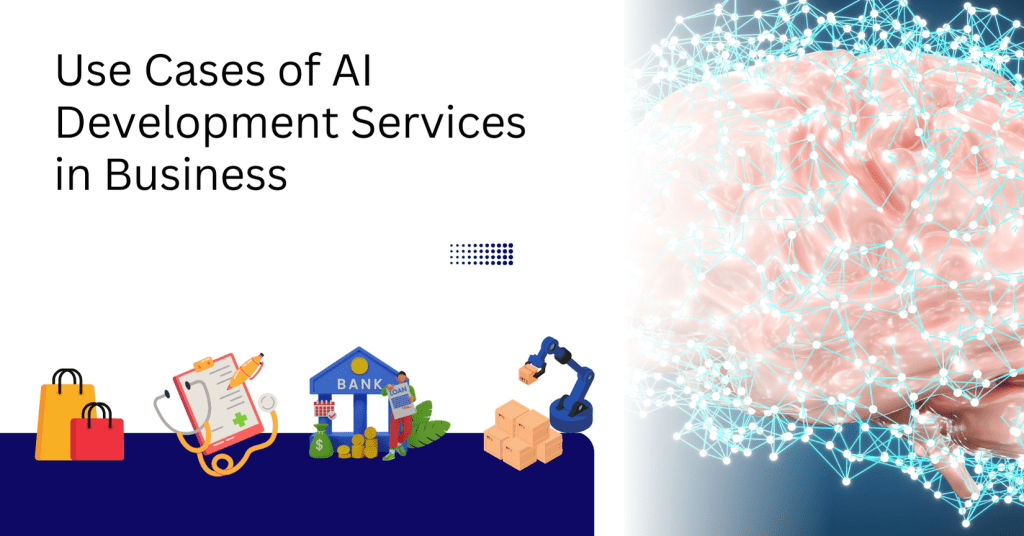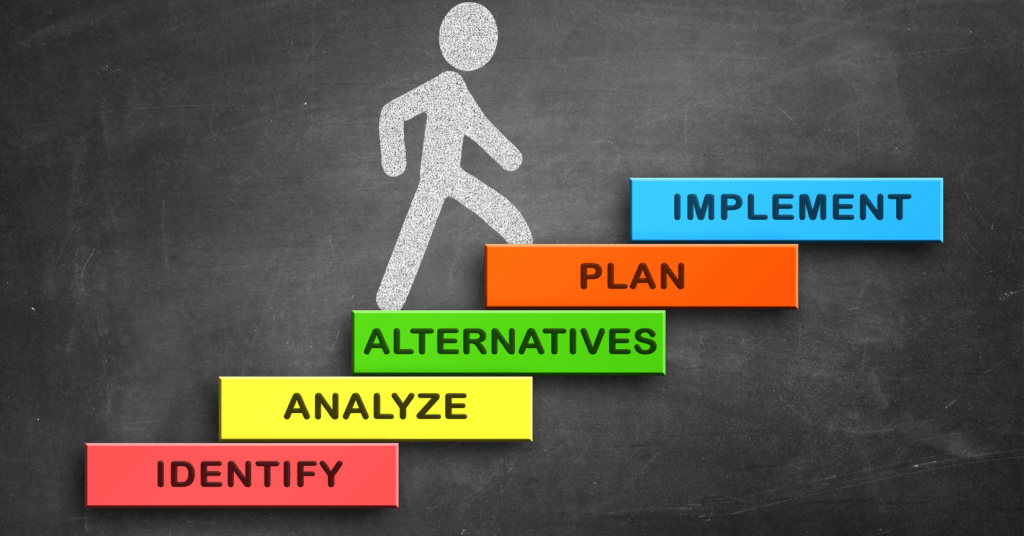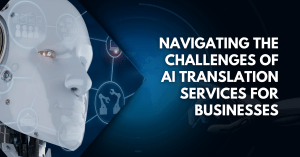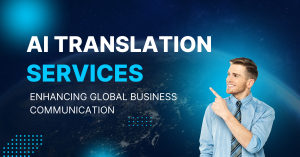Did you know that 77% of businesses have already adopted or are in the process of integrating AI to enhance efficiency? That’s not just a trend—it’s a massive shift in how companies operate. AI is no longer a trend; it’s a necessity for staying ahead in a fast-moving, competitive market.
From automating repetitive tasks to crafting hyper-personalized customer experiences, AI is reshaping industries across the board. Whether you’re a startup looking to scale or an enterprise aiming to streamline operations, AI development services provide the tools, strategies, and innovations you need to transform your business.
But how do you implement AI effectively? What industries are seeing the biggest impact? And where is AI heading next? here, we’ll break down everything you need to know—real-world applications, step-by-step implementation, and emerging trends—so you can harness the full power of AI and future-proof your business today.
What Are AI Development Services?
AI development services encompass designing, developing, and implementing AI-powered solutions tailored to meet business needs. These services leverage technologies like machine learning, natural language processing (NLP), and computer vision to automate tasks, analyze data, and improve decision-making.
Key Areas of AI Development Services:
- Custom AI Software Development: Building AI solutions tailored to specific business objectives.
- AI Automation Services: Automating repetitive tasks and workflows to enhance productivity.
- AI Workflow Automation: Integrating AI into existing systems to streamline business operations.
- Data Analysis and Predictive Modeling: Using AI to gain actionable insights from vast datasets.
Key Benefits of AI Development Services
1. Enhanced Operational Efficiency
AI automates repetitive and time-consuming tasks, allowing businesses to allocate resources more effectively. For instance, AI workflow automation can streamline invoice processing, customer support, and inventory management, saving time and reducing errors.
According to McKinsey, AI-driven automation can increase business productivity by up to 40%, with major benefits in industries like healthcare, retail, and finance.
2. Data-Driven Decision-Making
AI systems analyze large datasets to provide actionable insights, helping businesses make informed decisions. Predictive analytics, powered by AI, enables companies to forecast trends and adjust strategies accordingly.
A PwC study found that AI-powered analytics can increase business profitability by 38% by improving strategic planning.
3. Improved Customer Experience
AI-powered tools like chatbots and recommendation engines enhance customer interactions by delivering personalized solutions. These technologies predict customer needs, offer instant assistance, and foster stronger engagement.
Sephora’s AI chatbot, powered by machine learning, provides beauty product recommendations based on user preferences, enhancing shopping experiences.
4. Cost Savings
By automating manual tasks and optimizing processes, AI automation services reduce operational costs. Businesses can achieve more with fewer resources, maximizing return on investment.
A Deloitte survey found that AI-driven automation can cut operational costs by up to 30% in sectors like finance, logistics, and retail.
5. Competitive Advantage
Leveraging AI allows companies to innovate rapidly, stay ahead of industry trends, and deliver cutting-edge solutions. Whether through personalized customer experiences or faster product development, AI provides a significant edge.
According to Forrester, businesses that implement AI solutions experience a 5x faster growth rate than competitors who don’t.
Core Components of AI Development Services
1. AI Consulting and Strategy
AI experts assess your business needs, identify opportunities, and design a roadmap for integrating AI solutions effectively.
2. Custom AI Software Development
Tailored AI applications are developed to solve specific challenges, ensuring solutions align with business objectives. For example, retail businesses can use AI-driven inventory management systems to forecast demand and minimize waste.
3. Machine Learning Development
Machine learning models are built to analyze patterns, make predictions, and enable smarter decision-making. Industries like finance use ML for fraud detection and risk assessment.
4. Natural Language Processing (NLP)
NLP-powered tools, such as virtual assistants and chatbots, process and understand human language, enabling seamless communication and enhanced customer support.
5. AI Workflow Automation
AI integrates with existing systems to automate and optimize workflows, reducing human intervention and errors. This is particularly beneficial for industries like manufacturing and logistics.
6. Computer Vision Systems
AI applications powered by computer vision can analyze images and videos, enabling functionalities like facial recognition, object detection, and quality control in production lines.
Use Cases of AI Development Services in Businesses

Retail and E-Commerce
- Personalized Shopping: AI analyzes customer preferences, past purchases, and browsing behavior to offer tailored product recommendations. This enhances customer satisfaction and boosts sales.
- Dynamic Pricing: AI algorithms adjust prices in real-time based on demand, competition, and inventory levels, ensuring optimal profitability.
- Fraud Detection: AI-powered systems detect fraudulent activities like false returns or account hacking in online shopping environments.
Healthcare
- AI-Assisted Diagnostics: Machine learning models analyze medical images to identify early signs of diseases like cancer or heart conditions.
- Patient Monitoring: Wearable devices powered by AI track vital signs and alert healthcare providers about potential health risks in real-time.
- Drug Discovery: AI accelerates the process of identifying potential drug candidates, reducing time and costs associated with research and development.
Finance and Banking
- Fraud Prevention: AI detects unusual patterns in transactions, flagging potential fraud before it impacts customers.
- Risk Management: Predictive models assess creditworthiness, market risks, and portfolio performance to guide investment strategies.
- Customer Service: AI-powered chatbots provide 24/7 support, answering queries and resolving issues efficiently.
Manufacturing
- Predictive Maintenance: Sensors paired with AI analyze machine performance to predict potential failures, ensuring timely maintenance and reducing downtime.
- Quality Control: AI systems use computer vision to detect flaws in products during manufacturing, ensuring high-quality output.
- Supply Chain Optimization: AI automates inventory management and demand forecasting, streamlining production and distribution.
Marketing and Advertising
- Targeted Campaigns: AI analyzes customer data to deliver highly targeted and personalized advertisements.
- Customer Sentiment Analysis: AI tools evaluate customer feedback and social media mentions to gauge brand sentiment and improve marketing strategies.
Logistics and Transportation
- Route Optimization: AI helps logistics companies plan the most efficient delivery routes, saving time and reducing fuel consumption.
- Demand Forecasting: Predictive models help anticipate shipping demands, enabling better resource planning.
- Fleet Management: AI monitors fleet performance, ensuring timely maintenance and reducing operational costs.
Steps to Implement AI Development Services

Implementing AI development services is a structured process that requires careful planning, execution, and ongoing optimization. By following these steps, businesses can ensure a smooth and effective AI integration.
Define Clear Objectives
The first step in implementing AI development services is identifying specific business challenges or opportunities where AI can bring value. Clear goals are essential to guide the development process. Consider questions like:
- What tasks do we want to automate?
- Which processes need to be more efficient?
- How can AI enhance the customer experience or improve decision-making?
For example, a retailer may focus on automating inventory management or improving product recommendations, while a healthcare provider may prioritize using AI for diagnostics or patient monitoring. By defining clear, measurable objectives, businesses can ensure that AI will meet their needs effectively.
Assess and Prepare Data
Data is the fuel that powers AI models. Before jumping into development, businesses need to assess their data landscape. This involves:
- Collecting Relevant Data: Gather historical and real-time data that are important for the AI model. For instance, customer behavior data for AI-powered recommendations.
- Data Cleaning and Labeling: AI models require clean, structured, and labeled data. This means removing duplicates, filling in missing values, and ensuring that datasets are correctly labeled for supervised learning tasks.
- Data Integration: Ensure that data from various sources (CRM systems, website analytics, etc.) can be integrated smoothly. This may involve transforming data into a common format that can be processed by AI systems.
AI models are only as good as the data they’re trained on, so businesses must prioritize high-quality data for successful outcomes.
Collaborate with AI Experts
Developing AI solutions requires expertise in machine learning algorithms, model training, data analysis, and system integration. Collaborating with an experienced AI development services provider ensures the project’s success. AI professionals bring the technical know-how needed to:
- Select the right AI models and algorithms.
- Design scalable and efficient solutions.
- Integrate AI tools into your existing IT infrastructure.
It’s also essential to foster collaboration between business leaders, data scientists, and IT teams to ensure that the AI solution aligns with both the technical requirements and business objectives.
Build and Test Prototypes
Building and testing prototypes is an essential step to validate that AI solutions meet the business’s objectives before full-scale deployment. Prototyping allows businesses to:
- Test a scaled-down version of the AI system with real-world data.
- Identify potential issues and refine the solution before launch.
- Gather feedback from end users and adjust accordingly.
For example, an AI-based recommendation engine might be tested on a smaller product category first, then expanded as the system is optimized. This iterative approach helps minimize risks and ensures that the AI solution meets the desired objectives.
Deploy and Integrate AI Solutions
Once a prototype is tested and refined, it’s time to deploy the solution across the organization. AI development services providers will help with:
- System Integration: Seamlessly integrating AI tools into existing business workflows and software systems. For instance, integrating a customer service chatbot into a CRM system or an AI-powered predictive analytics tool into inventory management.
- Cloud or On-Premise Deployment: Depending on the business’s needs, AI solutions may be deployed on the cloud or on-premises. Cloud-based solutions offer scalability and flexibility, while on-premise solutions may provide more control over sensitive data.
The deployment stage often involves training staff, updating workflows, and ensuring that the organization’s infrastructure supports the new AI tools.
Monitor, Evaluate, and Optimize
AI is not a set-it-and-forget-it technology. To ensure continuous value, it’s essential to monitor, evaluate, and optimize AI models post-deployment:
- Performance Monitoring: Track key performance indicators (KPIs) like system accuracy, efficiency improvements, or cost reductions.
- User Feedback: Gather feedback from employees and customers who interact with the AI system to understand its impact and identify areas for improvement.
- Model Refinement: AI models often need to be retrained and updated as they process more data and learn from new trends. Regularly optimizing the system helps improve its predictive power and keeps it aligned with evolving business goals.
Continuous optimization ensures that AI solutions remain relevant, effective, and adaptable over time.
Future Trends in AI Development Services
AI technology is advancing rapidly, and businesses that leverage cutting-edge trends are more likely to stay competitive. Here are some of the most significant future trends in AI development services:
Democratization of AI
AI development tools and platforms are becoming more accessible to a broader range of businesses, even those without deep technical expertise. This trend is powered by the rise of no-code and low-code platforms, which allow businesses to create AI applications with minimal coding. These tools enable:
- Smaller businesses implement AI without a large development team.
- Non-technical users build AI solutions tailored to their needs.
The democratization of AI makes it easier for organizations to unlock its potential, regardless of their size or technical resources.
Ethical and Responsible AI
As AI becomes more ingrained in business operations, ensuring that it is ethical, transparent, and free from bias will be a critical focus. Ethical AI will involve:
- Bias Detection: AI models must be trained with diverse datasets to avoid unintended biases in decision-making, such as biased hiring algorithms or unfair credit assessments.
- Transparency and Explainability: There will be a greater push for explainable AI, where businesses can understand and explain how AI decisions are made, especially in sectors like finance, healthcare, and law.
- Accountability: Businesses will need to adopt frameworks that ensure AI models comply with regulations and uphold ethical standards.
AI’s growing role in society requires responsible practices that prioritize fairness, inclusivity, and transparency.
Real-Time Decision-Making
AI is increasingly being used for real-time decision-making across industries like finance, healthcare, and transportation. Some key examples include:
- Autonomous Vehicles: AI-powered vehicles make decisions based on real-time data from sensors, traffic patterns, and weather conditions.
- Financial Trading: AI systems will continue to make lightning-fast decisions in stock markets, optimizing trading strategies based on real-time data analysis.
- Healthcare Monitoring: Real-time AI-driven diagnostics will allow healthcare providers to detect life-threatening conditions instantly and recommend immediate interventions.
As AI evolves, its ability to make decisions in real-time will transform business operations, particularly in time-sensitive industries.
Hyper-Personalization
AI will drive hyper-personalization in every aspect of customer experience. By leveraging vast amounts of data and analyzing individual behavior, businesses will be able to offer:
- Personalized Product Recommendations: Online stores will predict and recommend products based on an individual’s browsing and purchase history.
- Tailored Marketing Campaigns: Marketing strategies will become more refined, targeting individuals with specific content that suits their preferences, interests, and needs.
- Customized Pricing: AI will enable dynamic pricing, offering discounts and pricing models based on customer profiles, demand, and purchase history.
Hyper-personalization helps businesses create stronger relationships with customers, increasing satisfaction and loyalty.
AI-Driven Sustainability
AI will play a significant role in helping businesses achieve sustainability goals. By analyzing large datasets, AI can optimize resource usage, minimize waste, and reduce environmental impact:
- Energy Efficiency: AI can optimize energy consumption in factories, offices, and homes by adjusting heating, cooling, and lighting based on real-time data.
- Smart Agriculture: AI systems can predict crop yields, optimize water usage, and detect diseases in plants, helping farmers use resources more efficiently.
- Waste Management: AI-powered solutions can improve recycling processes and reduce waste by optimizing collection and processing routes.
AI’s role in sustainability will continue to expand, helping businesses minimize their environmental footprint while maximizing efficiency.
AI and IoT Integration
As the Internet of Things (IoT) continues to grow, the integration of AI will enable smarter, interconnected systems. For example:
- Smart Homes: AI-powered IoT devices will make homes more energy-efficient by learning household routines and adjusting temperatures, lighting, and security accordingly.
- Industrial IoT: In manufacturing, AI will analyze data from IoT-enabled devices to monitor equipment health, predict failures, and optimize production processes.
The integration of AI and IoT will lead to more intelligent, autonomous systems capable of operating with minimal human intervention.
AI development services are transforming the way businesses operate, enabling them to unlock next-generation capabilities. From enhancing efficiency and cutting costs to delivering personalized customer experiences, the benefits are undeniable.
As AI continues to evolve, its potential to redefine industries grows. Whether you’re looking to streamline workflows with AI workflow automation, create innovative solutions with AI custom software development, or enhance decision-making with AI automation services, now is the time to embrace this technology.
Partner with expert AI developers to revolutionize your business operations and stay ahead in an increasingly competitive landscape. Ready to take the next step? Let’s build the future together!





